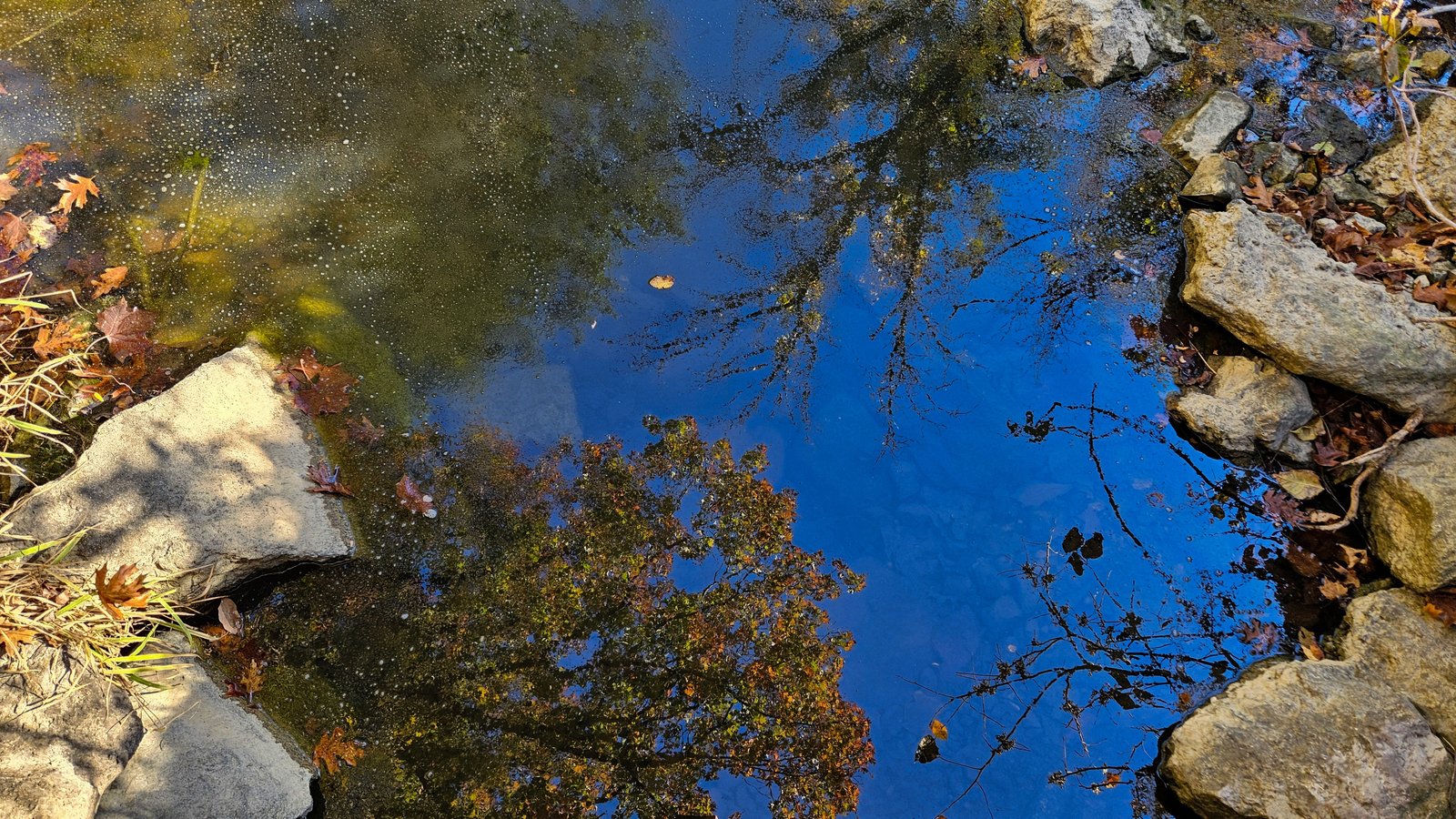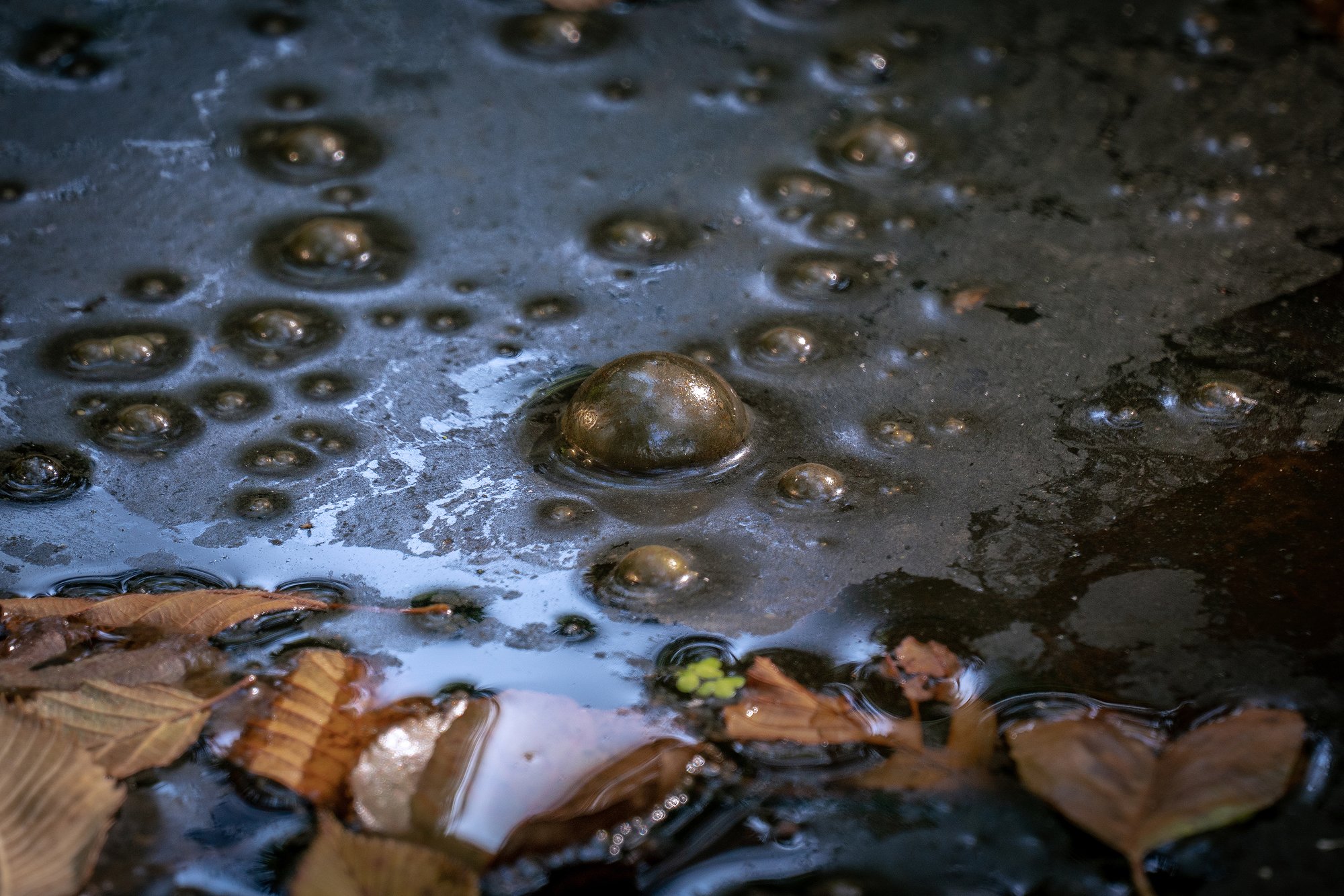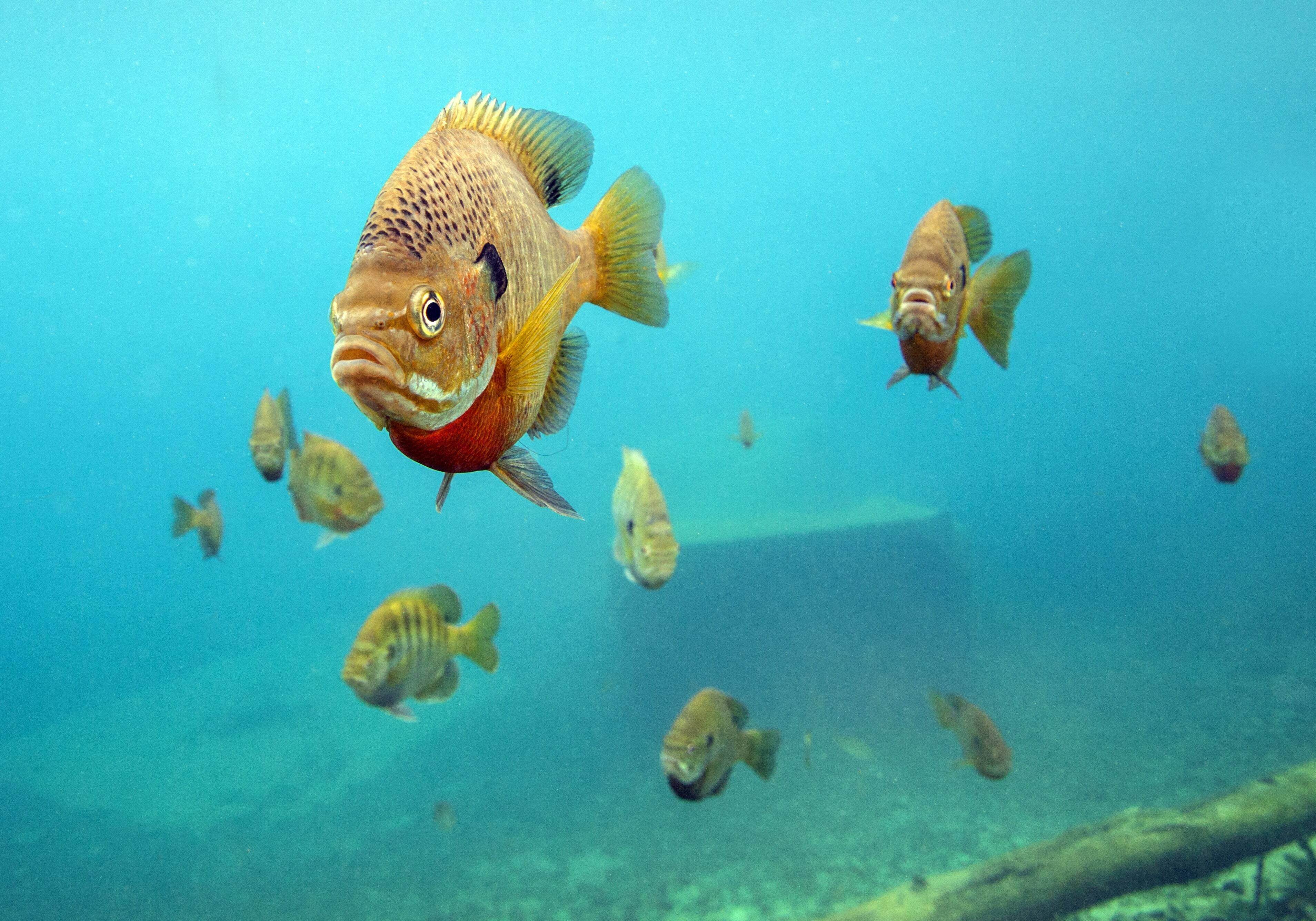
Many ponds and small lakes in Wisconsin experience conditions that lead to their surfaces being covered by a “scum” or biofilm. Biofilms can develop at different times of the year, and their composition often shifts depending on seasonal changes and unique waterbody characteristics. While some biofilms dissipate on their own, others can persist year-round and become a frustrating challenge for pond and lake owners. Fortunately, with the right management strategies, biofilms can be reduced and prevented to help protect both water quality and appearance.
What Causes Biofilms?
Biofilms are typically the result of organic debris floating on the water’s surface. This debris often includes pollen, dust, seeds, proteins, and lipids. Surface tension allows these materials to linger at the surface, especially in waterbodies with limited circulation or little wind exposure.
One overlooked contributor is the role of lipids, fats released as plants, algae, and animals break down in the water. When organic matter accumulates over time, the concentration of lipids can increase, giving debris buoyancy and creating a persistent scum layer. Ponds and lakes with heavy organic loads in their sediments are especially vulnerable to recurring biofilm problems.
Another seasonal factor to consider is fall turnover. As temperatures cool, lakes and ponds naturally mix from top to bottom. This process releases and redistributes nutrients and organic material throughout the water column. While turnover is a healthy and necessary reset for aquatic ecosystems, it can temporarily fuel biofilm formation as organic matter and lipids are brought to the surface. Without proper management, this can lead to both aesthetic issues and water quality concerns.
Strategies for Managing Biofilms
Managing biofilms effectively requires a multi-step approach that tackles both the causes and the visible symptoms.
1. Reduce Organic Material Accumulation
Limiting the buildup of organic matter is one of the most reliable long-term solutions. Organic debris doesn’t just come from inside the pond, leaf litter, grass clippings, and other yard waste that wash in from surrounding areas can significantly increase nutrient and organic loads. Reducing these inputs by managing shoreline vegetation, bagging clippings, and keeping leaves out of the water helps prevent future problems.
In addition, applying beneficial microbes helps accelerate natural decomposition and keeps organic levels in check. Consistent applications throughout the growing season, and before fall turnover, help maintain a balanced ecosystem and reduce the conditions that encourage biofilm formation.
2. Install Surface Aeration
Surface aeration, including high oxygen transfer aerators and floating fountains, improves circulation, disrupts surface tension, and prevents debris from lingering at the waterline. Aeration also increases dissolved oxygen levels, which boosts the activity of beneficial microbes and speeds up organic breakdown. Running aeration year-round, particularly during seasonal transitions like turnover, helps minimize biofilm problems.

3. Use Water Clarifying Products
For persistent or heavy scum layers, water clarifying treatments such as aluminum sulfate (alum) can be used to bind debris and cause it to sink. When paired with aeration and beneficial microbes, clarifiers are highly effective in restoring water clarity. Because proper dosing is critical, these treatments should always be applied by experienced lake management professionals.
A Cleaner, Healthier Waterbody
While biofilms are a natural occurrence, they don’t have to be a persistent nuisance. By combining strategies that reduce organic accumulation, improve circulation, and clarify water when needed, pond and lake owners can keep their water healthier and more enjoyable.
If biofilms are affecting your pond or lake, especially around seasonal events like fall turnover, our team at Wisconsin Lake & Pond Resource is here to help. We’ll provide expert guidance and develop a management plan tailored to the unique conditions of your waterbody.
About Wisconsin Lake & Pond Resource, A Jones Lake Management Partner
Wisconsin Lake & Pond Resource specializes in comprehensive lake and pond management solutions, including algae and aquatic weed control, aeration, hydraulic dredging, erosion control, and fisheries management. As a Jones Lake Management Partner, we serve a diverse range of clients, including HOAs, golf courses, municipalities, and private lake owners. With a commitment to science-driven strategies and environmental sustainability, Wisconsin Lake & Pond Resource helps maintain and restore aquatic ecosystems for long-term health and enjoyment.
Topics
- Aeration (3)
- Algae (2)
- Aquatic Weeds & Algae Control (13)
- Bathymetry Mapping (2)
- Company News & Updates (33)
- Erosion Control & Sediment Reduction (4)
- Fish Management (1)
- fish stocking (6)
- Fisheries Management (21)
- Fishery (2)
- Fountains & Aeration (16)
- Hydraulic Dredging (6)
- Invasive Species Management (7)
- Lake & Pond Management (47)
- Lake Management (1)
- Native Wetland Plantings (1)
- Nutrient Management (9)
- Pond Management (1)
- Seasonal Pond Management (15)
- Sediment Sampling (1)
- Stormwater & Runoff Management (5)
- Sustainability & Eco-Friendly Solutions (4)
- Water Quality (3)
- Water Quality Monitoring (2)
- Winter Care (1)
